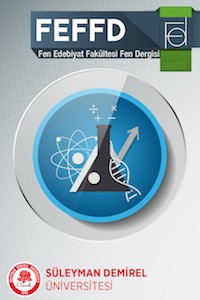Abstract
Different materials may be used together in order to obtain materials having desired properties. The main objective of this study is to investigate weldability and the mechanical properties of welded AISI 316 and AISI 4140 obtained by the electric arc technique. Mechanical properties were determined by tensile and impact tests. The critical points and Charpy energy value have been determined by means of load-elongation curves and impact test, respectively. The information about mechanical properties has been obtained by determining the hardness values at welding points and points which are closest to them. Microstructure investigations have been carried out using optical microscopy. The obtained results indicate that AISI 316 and AISI 4140 steels will be successfully combined with electric arc welding and used safely in engineering processes.
References
- [1] J. Yashar and A. Masoud, “Sub‐surface stress measurement of cross welds in a dissimilar welded pressure vessel,’’ Mater. Design, 85, 82–90. 2015.
- [2] A. Squillace, G. Campanile, P. Cavaliere, and F. Panella, “Effect of the welding parameters on mechanical and microstructural properties of AA6056 joints produced by friction stir welding,’’ J. Mater Process Tech., 180, 263-270, 2006.
- [3] W. M. Jodia, “Study the change of current weld on mechanical properties and microstructure of low carbon steel welded by electric arc welding,’’ J. Univ. Babylon Eng. Sci., 4, 1470-1477, 2017.
- [4] B. Okediran, D. S. Yawas, I. A. Samotu, I. M. Dagwa, and D. O. Obada, “Effects of electrode type on the mechanical properties of weldments of some steel samples produced in Nigeria,’’ World J. Eng., 11, 95-106, 2014.
- [5] J. Tusek and M. Suban, “Experimental Research of The Effect of Hydrogen in Argon as a shielding Gas in Arc Welding of High-Alloy Stainless Steel’’, Int. J Hydrogen Energy., 25, 369-376, 2000.
- [6] M. Ural and E. Kaluç, ’’Paslanmaz çeliklerin TIG yöntemi ile kaynağı’’, Metal Makina, 12-20, 1996.
- [7] O. Berdnikova, V. Pozniakov, A. Bernatskyi, T. Alekseienko, and V. Sydorets, “Effect of the structure on the mechanical properties and cracking resistance of welded joints of low-alloyed high-strength steels,’’ Procedia Structural Integrity 16, 89–96, 2019.
- [8] L. Markashovaa, O. Berdnikovab, A. Bernatskyic, V. Sydoretsd, and O. Bushmae, “Crack Resistance of 14KhGN2MDAFB high-strength steel joints manufactured by laser welding,’’ IOP Conf. Ser., Earth Environ. Sci., 224, 1-9, 2019.
- [9] C. Aytekin, ’’Elektrik Ark kaynağı ile Birlşetirilmiş İki Farklı Çelik Malzeme (AISI 316-AISI 4140) nin Kaynak Bölgesinin İncelenmesi’’, Bitirme Tezi, Süleyman Demirel Üniversitesi, Isparta, Turkey, 2017.
Abstract
İstenen özelliğe sahip malzemeler üretebilmek için farklı malzemeler bir arada kullanılabilir. Bu araştırmanın temel amacı elektrik ark tekniği ile birleştirilen AISI 316 ve AISI 4140 kaynaklarının kaynaklanabilirliğini ve mekanik özelliklerini incelemektir. Mekanik özellikler, çekme ve darbe çentik testleri ile belirlenmiştir. Kritik noktalar ve Charpy enerjisi değerleri sırasıyla yük uzama eğrileri ve darbe testi yardımıyla belirlenmiştir. Mekanik özelliklere ait bilgiler, kaynak noktaları ve kaynak noktalarına yakın noktalardaki sertlik değerleri belirlenmek suretiyle elde edilmiştir. Mikroyapı incelemeleri, optik mikroskop kullanılarak gerçekleştirilmiştir. Elde edilen sonuçlar, AISI 316 ve AISI 4140 çeliklerinin elektrik ark kaynağı ile başarılı bir şekilde birleştirilebileceğini ve mühendislik işlemlerinde güvenle kullanılabileceğini göstermektedir.
References
- [1] J. Yashar and A. Masoud, “Sub‐surface stress measurement of cross welds in a dissimilar welded pressure vessel,’’ Mater. Design, 85, 82–90. 2015.
- [2] A. Squillace, G. Campanile, P. Cavaliere, and F. Panella, “Effect of the welding parameters on mechanical and microstructural properties of AA6056 joints produced by friction stir welding,’’ J. Mater Process Tech., 180, 263-270, 2006.
- [3] W. M. Jodia, “Study the change of current weld on mechanical properties and microstructure of low carbon steel welded by electric arc welding,’’ J. Univ. Babylon Eng. Sci., 4, 1470-1477, 2017.
- [4] B. Okediran, D. S. Yawas, I. A. Samotu, I. M. Dagwa, and D. O. Obada, “Effects of electrode type on the mechanical properties of weldments of some steel samples produced in Nigeria,’’ World J. Eng., 11, 95-106, 2014.
- [5] J. Tusek and M. Suban, “Experimental Research of The Effect of Hydrogen in Argon as a shielding Gas in Arc Welding of High-Alloy Stainless Steel’’, Int. J Hydrogen Energy., 25, 369-376, 2000.
- [6] M. Ural and E. Kaluç, ’’Paslanmaz çeliklerin TIG yöntemi ile kaynağı’’, Metal Makina, 12-20, 1996.
- [7] O. Berdnikova, V. Pozniakov, A. Bernatskyi, T. Alekseienko, and V. Sydorets, “Effect of the structure on the mechanical properties and cracking resistance of welded joints of low-alloyed high-strength steels,’’ Procedia Structural Integrity 16, 89–96, 2019.
- [8] L. Markashovaa, O. Berdnikovab, A. Bernatskyic, V. Sydoretsd, and O. Bushmae, “Crack Resistance of 14KhGN2MDAFB high-strength steel joints manufactured by laser welding,’’ IOP Conf. Ser., Earth Environ. Sci., 224, 1-9, 2019.
- [9] C. Aytekin, ’’Elektrik Ark kaynağı ile Birlşetirilmiş İki Farklı Çelik Malzeme (AISI 316-AISI 4140) nin Kaynak Bölgesinin İncelenmesi’’, Bitirme Tezi, Süleyman Demirel Üniversitesi, Isparta, Turkey, 2017.
Details
| Primary Language | English |
|---|---|
| Subjects | Metrology, Applied and Industrial Physics |
| Journal Section | Makaleler |
| Authors | |
| Publication Date | May 31, 2020 |
| Published in Issue | Year 2020 Volume: 15 Issue: 1 |

